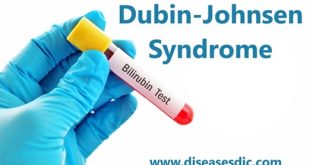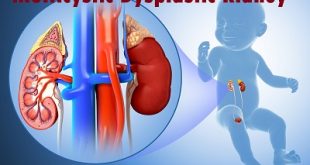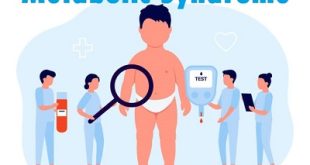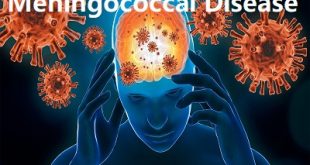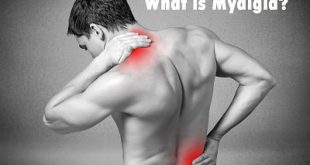Description
Myofascial pain syndrome (MPS) is a fancy way to describe muscle pain. It refers to pain and inflammation in the body’s soft tissues. MPS is a chronic condition that affects the fascia (connective tissue that covers the muscles). It may involve either a single muscle or a muscle group. In some cases, the area where a person experiences the pain may not be where the myofascial pain generator is located. Experts believe that the actual site of the injury or the strain prompts the development of a trigger point that, in turn, causes pain in other areas. This situation is known as referred pain.
Types of Myofascial Pain Syndrome
There Are Two Types of Myofascial Pain Syndrome
Primary Myofascial Pain Syndrome
This is not related to other medical conditions or disorders. Usually primary myofascial pain syndromes are the overuse syndromes and are named after the structures affected or for common conditions that produce them. Primary myofascial pain syndromes or primary chronic myofascial pain are myogenic headache (chronic tension-type and mixed tension-type/migraine headache), neck pain, shoulder pain, frozen shoulder, low back pain, piriformis syndrome, knee pain and ankle pain. Headaches are a form of referred pain from the muscles of the neck and shoulders. Postural stresses are the most common causes of neck pain, especially forward head posture and forward rolled shoulders.
Secondary Myofascial Pain Syndrome
This occurs in conjunction with other medical conditions. Secondary myofascial pain syndromes or secondary chronic myofascial pain are chronic cervical whiplash neck pain, temporomandibular joint dysfunction, secondary frozen shoulder/ impingement syndrome, rotator cuff tear, visceral pain syndromes (non-anginal chest pain), hepatic referred pain, renal/ureteral flank pain, structural anatomic variations (scoliosis), pelvic torsions, leg-length inequality, radicular pain, postlaminectomy syndrome, rheumatoid arthritis, osteoarthritis (cervical and lumbar spondylosis), hip or shoulder osteoarthritis, Sjögren’s syndrome, fibromyalgia, acute trauma (fractures), soft-tissue injury, postoperative pain, hypothyroidism, chronic infection (candidiasis, parasitic disease) and Vitamin B12 deficiency.
Pathophysiology
The initial change in muscle that is associated with myofascial pain seems to be the development of the taut band, which is in term a motor abnormality. Several mechanisms have been hypothesied to explain this motor abnormality, the most accepted one is the “Integrated Hypothesis” first developed by Simmons and later expanded by Gerwin.
Simmons’ integrated hypothesis is a six-link chain that starts with the abnormal release of acetylcholine. This triggers an increase in muscle fiber tension (formation of taut band). The taut band is thought to constrict blood flow that leads to local hypoxia. The reduced oxygen disrupts mitochondrial energy metabolism reducing ATP and leads to tissue distress and the release of sensitizing substances. These sensitizing substances lead to pain by activation of nociceptors and also lead to autonomic modulation that then potentiates the first step: abnormal acetylcholine release.
Gerwin expanded this hypothesis by adding more specific details. He stated that sympathetic nervous system activity augments acetylcholine release and that local hypoperfusion caused by the muscle contraction (taut band) resulted in muscle ischemia or hypoxia leading to an acidification of the pH.
The prolonged ischemia also leads to muscle injury resulting in the release of potassium, bradykinins, cytokines, ATP, and substance P which might stimulate nociceptors in the muscle. The end result is the tenderness and pain observed in myofascial trigger points.
Depolarization of nociceptive neurons causes the release of calcitonin gene-related peptide (CGRP).
CGRP inhibits acetylcholine esterase, increases the sensitivity of acetylcholine receptors and release of acetylcholine resulting in SEA.
What causes myofascial pain syndrome?
The jury is still out about all of the causes, contributing factors and exactly how the pain mechanism works.
Causes of myofascial pain syndrome include:
- Muscle injury.
- Muscle strain/repetitive muscle use (e.g. hammering).
- Muscle weakness/lack of muscle activity (e.g. a leg in a cast will not get enough movement).
- Poor posture.
- Working in or living in a cold environment.
- Emotional stress (can cause muscle tension).
- Pinched nerve.
Other factors thought to contribute to the development of myofascial pain syndrome include:
- Metabolic or hormonal problems such as thyroid disease or diabetic neuropathy.
- Vitamin deficiencies, including vitamin D and folate.
- Presence of chronic infections.
Risk factors
Myofascial pain syndrome is caused by a stimulus, such as muscle tightness, that sets off trigger points in your muscles. Factors that may increase your risk of muscle trigger points include:
Muscle injury. An acute muscle injury or continual muscle stress may lead to the development of trigger points. For example, a spot within or near a strained muscle may become a trigger point. Repetitive motions and poor posture also may increase your risk.
Stress and anxiety. People who frequently experience stress and anxiety may be more likely to develop trigger points in their muscles. One theory holds that these people may be more likely to clench their muscles, a form of repeated strain that leaves muscles susceptible to trigger points.
What are the symptoms of myofascial pain syndrome?
The primary symptoms of myofascial pain syndrome are:
- Localized muscle pain
- Trigger points that activate the pain
Infrequent but potential symptoms include:
- Muscle stiffness
- Fatigue
- Poor sleep
- Headaches
- Postural abnormalities such as hunching, shoulder rounding, or forward head posture (not aligned with spine)
Complications
Complications associated with myofascial pain syndrome may include:
Sleep problems. Signs and symptoms of myofascial pain syndrome may make it difficult to sleep at night. You may have trouble finding a comfortable sleep position. And if you move at night, you might hit a trigger point and awaken.
Fibromyalgia. Some research suggests that myofascial pain syndrome may develop into fibromyalgia in some people. Fibromyalgia is a chronic condition that features widespread pain. It’s believed that the brains of people with fibromyalgia become more sensitive to pain signals over time. Some doctors believe myofascial pain syndrome may play a role in starting this process.
Diagnosis of Myofascial Pain Syndrome
Diagnosis of Myofascial Pain Syndrome or Chronic Myofascial Pain is done by way of physical exam where upon palpating the trigger point causes pain. Four types of trigger points are identified:
- Active trigger point is an area of acute tenderness that typically lies within the skeletal muscle and is associated with local or regional pain.
- Latent trigger point is a dormant (inactive) area that has the capacity to act like a trigger point.
- Secondary trigger point is an extremely irritable spot in a muscle that may become active due to muscular overload in another muscle.
- Satellite myofascial point is also an extremely irritable spot in a muscle that becomes active because the muscle is present in the area of another trigger point.
Lab tests such as hypothyroidism, hypoglycemia, and vitamin deficiencies help in identifying predisposing conditions causing Myofascial Pain Syndrome or Chronic Myofascial Pain.
- Complete blood count (CBC)
- Chemistry profile
- Erythrocyte sedimentation rate (ESR)
- Levels of vitamins C, B-1, B-6, B-12, and folic acid
- Thyrotropin level
- Infrared or liquid crystal thermography
- Needle electromyography (EMG)
- X-ray
Treatment
Treatment for myofascial pain syndrome typically includes medications, trigger point injections or physical therapy. No conclusive evidence supports using one therapy over another, but exercise is considered an important component of any treatment program. Discuss your options and treatment preferences with your doctor. You may need to try more than one approach to find pain relief.
Medications
Medications used for myofascial pain syndrome include:
- Pain relievers. Over-the-counter pain relievers such as ibuprofen (Advil, Motrin IB, others) and naproxen sodium (Aleve) may help some people. Or your doctor may prescribe stronger pain relievers. Some are available in patches that you place on your skin.
- Antidepressants. Many types of antidepressants can help relieve pain. For some people with myofascial pain syndrome, amitriptyline appears to reduce pain and improve sleep.
- Sedatives. Clonazepam (Klonopin) helps treat the anxiety and poor sleep that sometimes occur with myofascial pain syndrome. It must be used carefully because it can cause sleepiness and can be habit-forming.
Therapy
A physical therapist can devise a plan to help relieve your pain based on your signs and symptoms. Physical therapy to relieve myofascial pain syndrome may involve:
- Stretching. A physical therapist may lead you through gentle stretching exercises to help ease the pain in your affected muscle. If you feel trigger point pain when stretching, the physical therapist may spray a numbing solution on your skin.
- Posture training. Improving your posture can help relieve myofascial pain, particularly in your neck. Exercises that strengthen the muscles surrounding your trigger point will help you avoid overworking any one muscle.
- Massage. A physical therapist may massage your affected muscle to help relieve your pain. The physical therapist may use long hand strokes along your muscle or place pressure on specific areas of your muscle to release tension.
- Heat. Applying heat, via a hot pack or a hot shower, can help relieve muscle tension and reduce pain.
- Ultrasound. This type of therapy uses sound waves to increase blood circulation and warmth, which may promote healing in muscles affected by myofascial pain syndrome.
Needle procedures
Injecting a numbing agent or a steroid into a trigger point can help relieve pain. In some people, just the act of inserting the needle into the trigger point helps break up the muscle tension. Called dry needling, this technique involves inserting a needle into several places in and around the trigger point. Acupuncture also appears to be helpful for some people who have it.
Prevention
Doctors don’t know exactly what causes myofascial pain syndrome, so they can’t always prevent it. There are some steps to take to help reduce the pain or lower the chance of getting more trigger points. These include:
Exercise. Exercising can help reduce pain and give the person something to focus on during mild-to-moderate pain.
Relax. Finding ways to relax, like meditating, writing in a journal, or talking to friends and family, might make it easier to better cope with pain.
Stay healthy. Eating a healthy diet, getting enough sleep, and trying to avoid stress whenever possible can help prevent flare-ups.
 Diseases Treatments Dictionary This is complete solution to read all diseases treatments Which covers Prevention, Causes, Symptoms, Medical Terms, Drugs, Prescription, Natural Remedies with cures and Treatments. Most of the common diseases were listed in names, split with categories.
Diseases Treatments Dictionary This is complete solution to read all diseases treatments Which covers Prevention, Causes, Symptoms, Medical Terms, Drugs, Prescription, Natural Remedies with cures and Treatments. Most of the common diseases were listed in names, split with categories.
